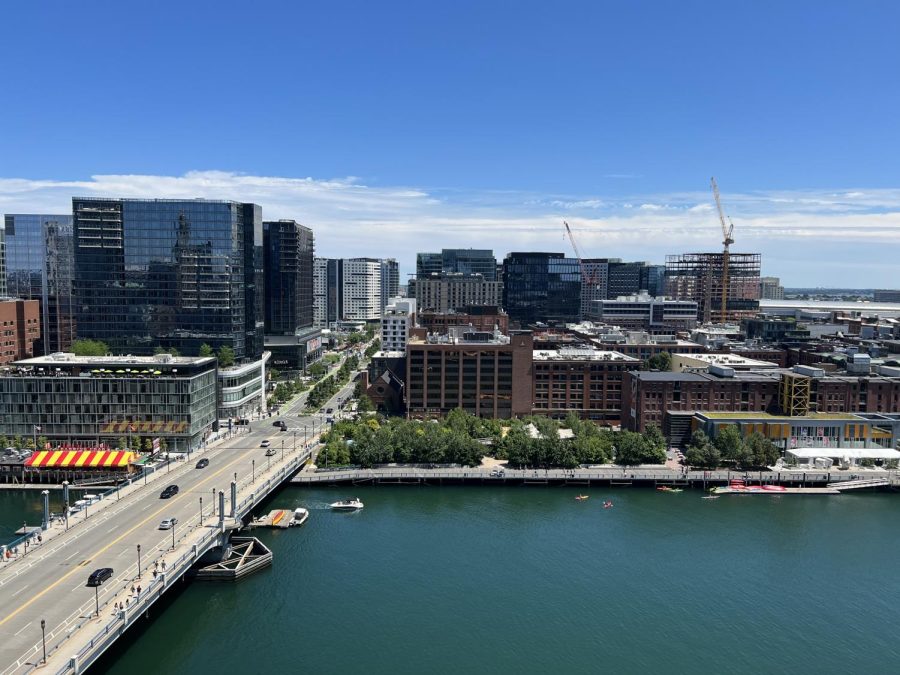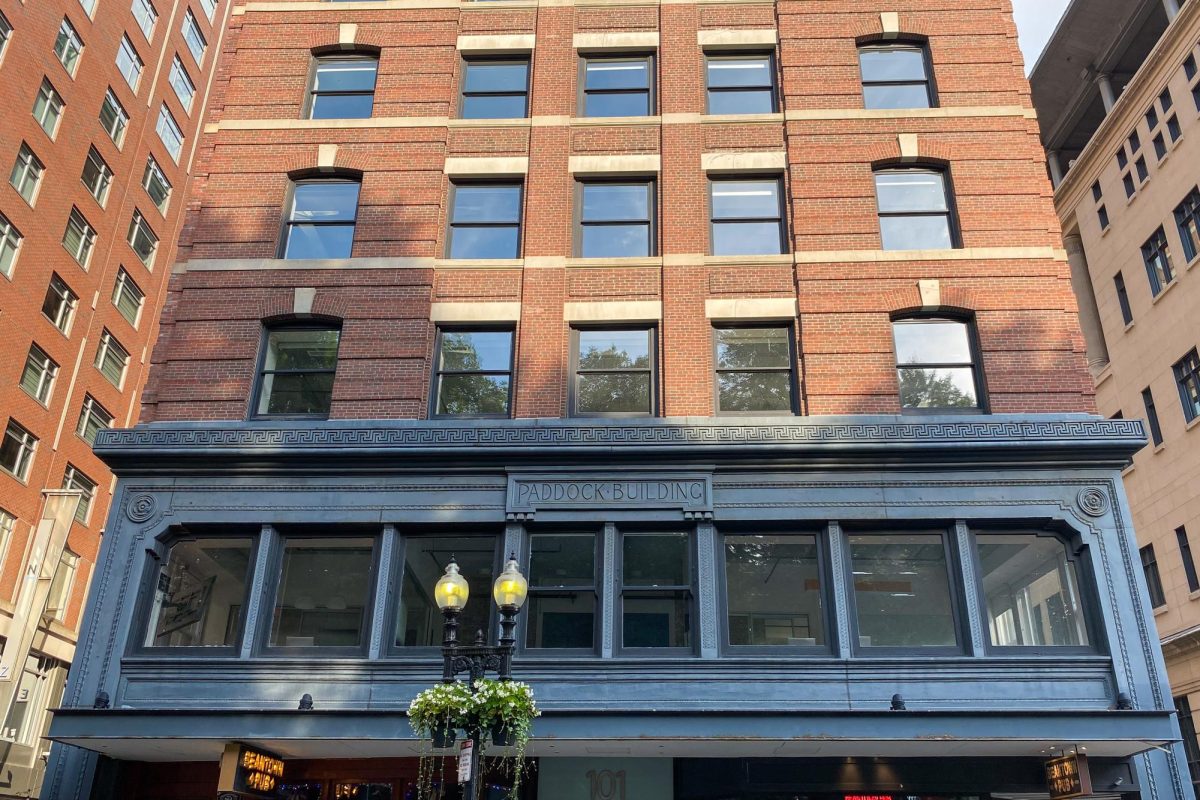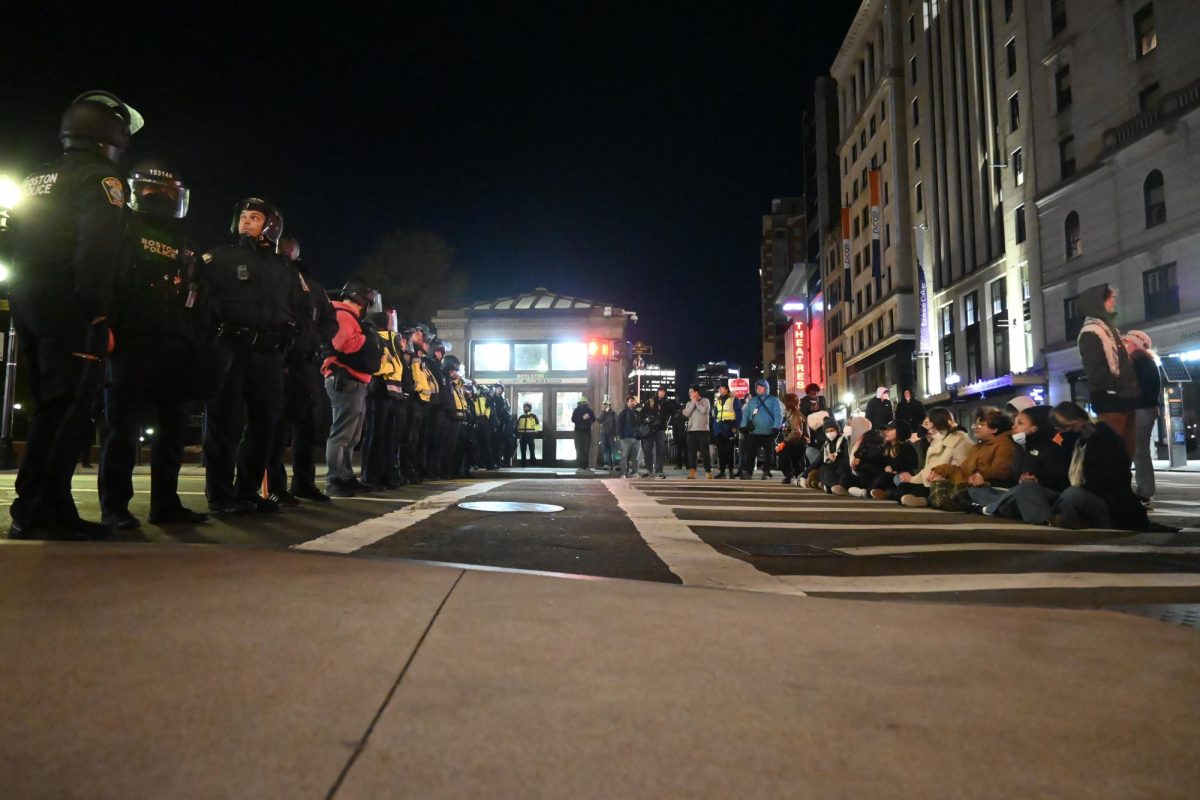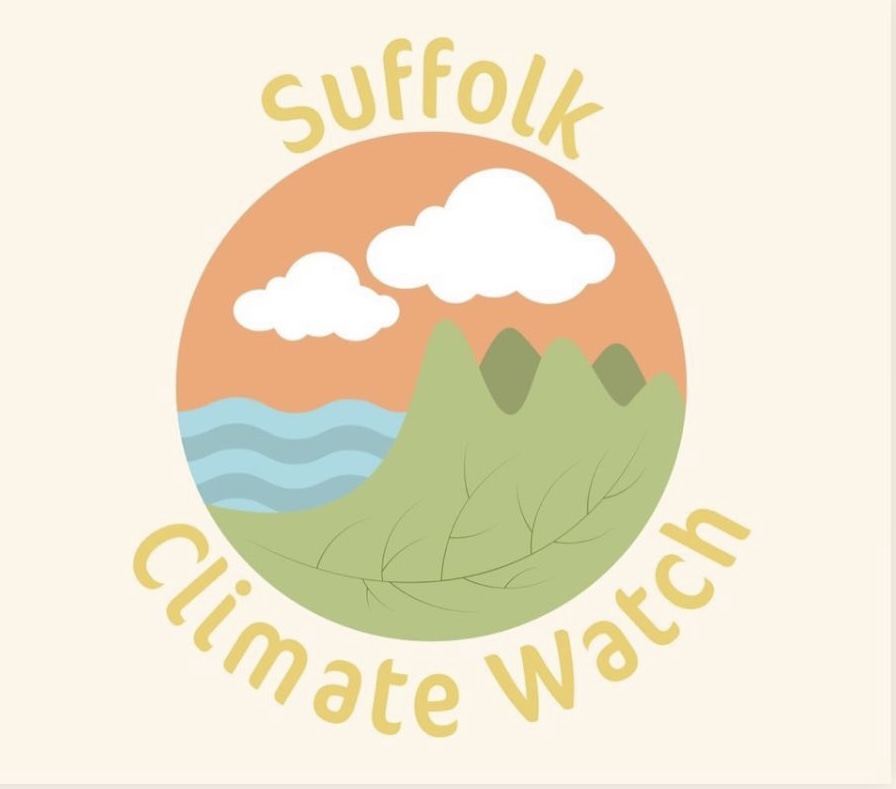Imagine enjoying a sunny day in the Seaport. The sky is clear and the flowers are blooming, but the streets are completely flooded. This is what Boston could look like in the next century if serious actions are not taken to protect coastal urban areas from flooding due to sea level rise.
According to the United Nations, climate change brings with it many possible risks, now and in the near future. Climate change is a long-term shift in temperatures and extremism in weather patterns. Today, Boston faces new challenges in relation to sea level rise and the damage that extreme storms will bring.
“There are about 30 subcomponents of climate change. There’s the fact that we have a warming atmosphere, that’s part of what makes the temperature hotter and melts the ice caps. All that water has to go somewhere and it’s going into the ocean. Another part of it is that we’re warming up the ocean and when you warm up a liquid it expands, so we’re really adding to sea level rise from two different places,” said Haley Schiebel, a Suffolk University professor and environmental scientist.
Schiebel believes that the issues are not something that are avoidable and that the world has already locked in a couple of centimeters from the burning of fossil fuels that we have yet to see.
Zachary Chrisco, a civil engineer at Sasaki Associates, a Boston architecture and urban design firm, also had thoughts on sea level rise in Boston.
“There are a few different issues, one is obviously rising sea levels, the other is the impact of rising groundwater that’s associated with rising sea levels … So, there is water coming at us in a few different ways right now and it’s a little different than the way it used to be,” said Chrisco.
A report found that if emissions are reduced, sea levels may increase by a foot in the 21st century. The Boston Harbor is likely to see about 3.4 feet by the end of the century. The report also found that Boston may experience flooding that lasts for at least an hour a day for half of the days of the year by 2050.
As it is, Boston experiences about 15 days of flooding per year now. As sea level rise increases, Boston will also experience more once-in-a-decade floods, regardless of slowing emissions, and by 2050 it is likely that these events will occur every year. Another flooding threat to Boston is an increase in precipitation levels. It is likely that Boston will see a 10% to 20% increase in precipitation levels by 2050 and a 20% to 30% increase by 2100.
The impacts of flooding have dire consequences for Boston’s future. There will be public health risks due to infectious diseases, chemical hazards and injuries. Immense flooding could damage the integrity of buildings, could affect emergency evacuation routes and burden the city with financial costs for repairs.
Another issue that Boston will face as sea levels rise and flooding occurs, is damage to transportation systems. According to The Boston Globe, the rising seas could result in the inundation of portions of the system and the inability to use important sections of the rail that thousands rely on.
Boston may also struggle with draining flood waters. The Boston Sewer and Water Commission is responsible for Boston’s storm drainage system that collects rainwater runoff and releases it into waters nearby. According to John Sullivan and Charlie Jewell, the chief engineer and director of planning at the Boston Sewer and Water Commission, rising sea levels are a major concern when tides are higher because when the tides rise above the pipes, the water has nowhere to drain out.
“Let’s say it rains like hell, and then we don’t pump it out, you can flood out the entire MBTA system so that nobody can use public transit. The wiring down there is old and if it is flooded, not only will it take several days to pump out, but then they may not be able to use the signals,” said Sullivan.
However, there are solutions Boston has tried. A number of sea level rise solutions have been implemented in Boston, such as Phase II of Coastal Resilience Solutions, which considers East Boston and Charlestown’s vulnerability to sea level rise and assesses solutions for their coastal resilience. Boston has also built many parks that act as floodwater basins. Unfortunately, these may not be enough. The city has limitations on how it can implement solutions. These include jurisdictional issues, permitting issues and the lack of sufficient funding to pay for resilient infrastructure.
With sea level rise now unavoidable, the best course of action is to prepare for resilience in the city. Suggestions from sources included green solutions, expanding upon the city’s drainage systems and stricter guidelines for buildings near the water. Starting now to create green solutions in our city will help in stopping further global warming and climate change issues, as well as amending some of the impacts that the city faces from sea level rise. Expanding upon the city’s drainage systems and protecting the underground piping will keep the MBTA moving the way it usually does and keep the streets from flooding during large storm events. Finally, the city could implement stricter guidelines for those buildings near the water to protect its electrical systems and foundations.
Despite the issues, working to protect the city of Boston from projected high levels of flooding and sea level rise in the coming years is more important and must be a priority as we continue to build the city and think of where we are putting our time and expenses.
“It’s going to be an all of the above approach. We’re going to need a combination of smart infrastructure, policies to support that and strategic relocation,” said Hessann Farooqi, the Boston Climate Action Network’s advocacy director.
Boston has a long way to go before it is fully protected from sea level rise, but these solutions are a good start to protect Boston from the waters to come.

















